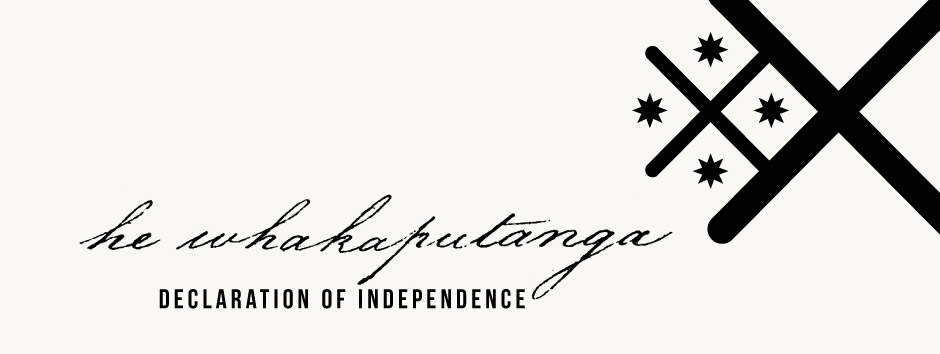Signing details
Te Hāpuku, sometimes called Te Ika-nui-o-te-moana, was a gifted orator and leader of Ngāti Te Whatuiāpiti, and whānau links to other major tribal groups in Hawke’s Bay made him influential throughout the region. Through his father Kurimate, also known as Te Rangiko-ia-anake II, Te Hāpuku was of Ngāti Te Manawakawa and Ngāti Te Rangikoiānake. His mother, Tatari, was of Ngāi Tapuhara and Ngāti Hinepare, hapū of Ngāti Kahungunu. He had a number of wives, including Te Heipora, as well as Whaitiri and Hinerangi.
During the 1820s and 1830s, Te Hāpuku was under the shadow of Te Pareihe, the senior Ngāti Te Whatuiāpiti war leader. Both took part in the many conflicts of the 1820s, including against Waikato and Taranaki tribes, and the two rangatira were sometimes in conflict with each other. Te Hāpuku opposed Te Pareihe making peace with Waikato, despite having tried to do so himself. When Te Momo-a-Irawaru of Ngāti Raukawa invaded central Hawke’s Bay in 1824, Te Hāpuku was inclined to make peace, but Te Pareihe and his allies killed Te Momo and drove out his people. Te Hāpuku’s sister, Hine-i-hoaia, was later killed in satisfaction for the death of Te Momo, adding to the tension between Te Hāpuku and Te Pareihe.
After the death of his sister, Te Hāpuku lived at Te Pakeke, an island pā at Ahuriri (Napier). In 1833 he joined the exodus of Ngāti Te Whatuiāpiti and Ngāti Kahungunu to Māhia Peninsula. Here Te Hāpuku encountered whalers and other Europeans, including missionaries, many of whom he held in contempt. His antipathy towards whalers was so strong that the British Resident, James Busby, threatened to send a warship to the area.
Despite this incident with Busby, Te Hāpuku was a frequent visitor to the Bay of Islands thanks to his kinship and political ties to northern rangatira, in particular to Pōmare II and Kawiti. On 25 September 1838, during one of his visits to the north, Te Hāpuku added his tohu to He Whakaputanga, becoming the first rangatira from outside Te Tai Tokerau to sign.
Crown officials were anxious to secure the signatures of all those who had been party to He Whakaputanga when seeking support for the Treaty of Waitangi. Te Hāpuku was approached by Major Thomas Bunbury in June 1840 but was reluctant to sign Te Tiriti o Waitangi, arguing that Ngāpuhi were now slaves as a result of doing so. To make his point, he drew a diagram depicting Queen Victoria over the rangatira, who in turn were over their iwi and hapū. It was only after much persuasion from Bunbury that Te Hāpuku agreed to place his tohu on the document. Te Hāpuku eventually signed the Treaty on board the HMS Herald.
In the years that followed, Te Hāpuku developed warmer relationships with those Europeans he respected, becoming a close friend of the Land Purchase Commissioner and Native Minister, Donald McLean, who later settled in Hawke’s Bay. With McLean’s encouragement, Te Hāpuku was involved in a number of contentious land dealings – dealings that caused resentment and conflict with fellow rangatira. Armed clashes with rival rangatira and their supporters erupted in late 1857 and early 1858 in the war known as Te Pakiaka, and by 1859 Te Hāpuku had lost most of his followers.
Te Hāpuku, however, remained a powerful rangatira. He was approached to lend his support for the Māori King movement, but he declined, and attended the 1860 Kohimarama conference. He later encouraged the spread of the Pai Mārire faith among his own people. In the early 1870s Te Hāpuku threw his weight behind the Hawke’s Bay-based Repudation movement that aimed to overturn unjust land sales. When he died in May 1878, his funeral was attended by 400 Māori and Pākehā.


Community contributions